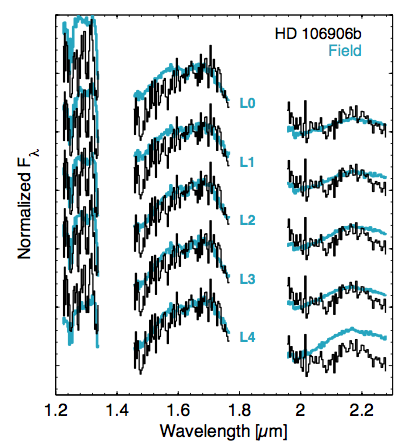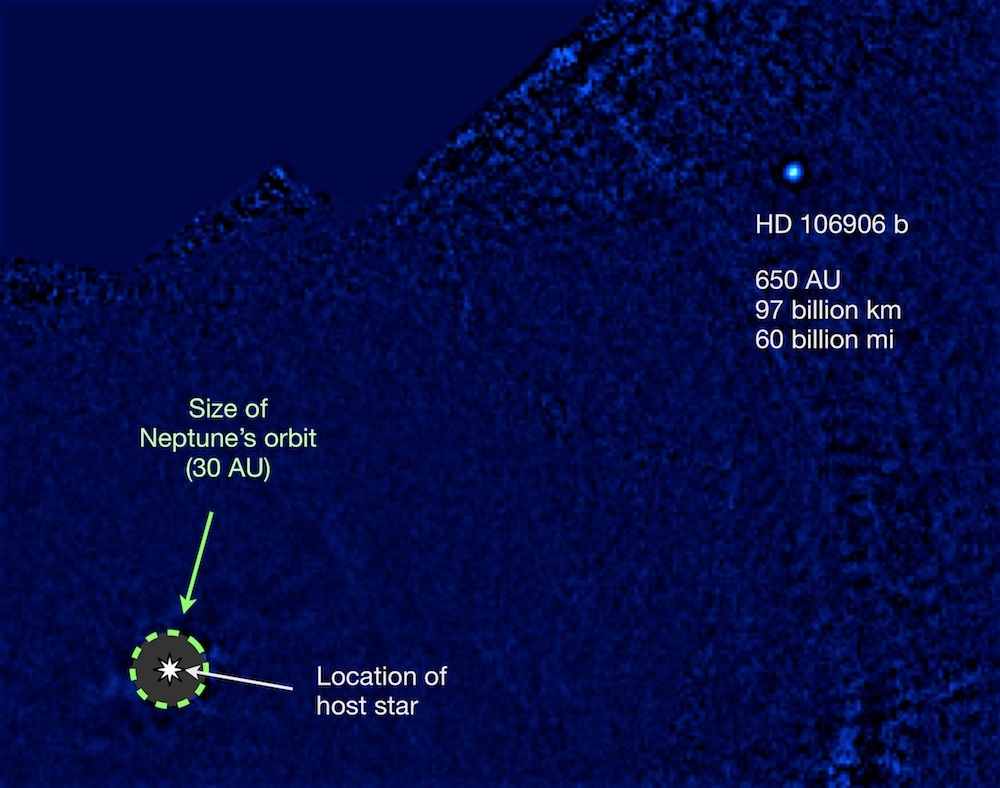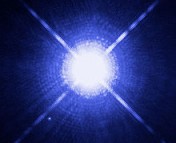- Title: HD 106906 b: A Planetary-Mass Companion Outside a Massive Debris Disk
- Authors: Vanessa Bailey, Tiffany Meshkat, Megan Reiter, Katie Morzinski, Jared Males, Kate Y. L. Su, Philip
M. Hinz, Matthew Kenworthy, Daniel Stark, Eric Mamajek, Runa Briguglio, Laird M. Close, KatherineB. Follette, Alfio Puglisi, Timothy Rodigas, Alycia J. Weinberger, and Marco Xompero
- First Author’s Institution: Steward Observatory, University of Arizona
- Paper Status: Accepted to Astrophysical Journal Letters
Finding planets with direct imaging can be difficult. You need a lot of telescope time to find a single planet, so it helps if you already know where to look. Systems with debris disks are a great place to start, especially unusually-shaped debris disks. Planets can sculpt disks with their gravitational perturbations, so a disk with a large gap or cavity is a big neon sign saying “Look Here for a Planet!”
The authors of this work decided to search the HD 106906 system for planets because the star has a debris disk with a large inner cavity. They did find a stellar companion with the mass of a planet, but it wasn’t orbiting inside the disk. In fact, HD 106906 b orbits at one of the farthest known distances for a planetary-mass companion, at a projected distance of 650 AU (~0.01 light-years) from the star!
The authors observed the HD 106906 system with the Clio2 camera on the 6.5 m Magellan Clay telescope, using the Magellan Adaptive Optics system. Clio2 is an infrared camera, which allows us to see the thermal emission from the companion without being overwhelmed by light from the star (see Fig. 1). The disk can’t be seen in the images, but the infrared excess from the stellar spectrum indicates that the disk extends from about 20 AU to 120 AU. The companion HD 106906 b is all the way out at 650 AU, but it might be on an eccentric orbit that can bring it back in to 135 AU, allowing the companion to shape the disk from the outside, truncating it at 120 AU.
The authors used Magellan’s Folded-Port InfraRed Echellette (FIRE) spectrometer to get a spectrum of HD 106906 b. The spectral type of a brown dwarf (which can include types M, L, T, and Y) indicates its expected luminosity and temperature, so the authors compared the spectrum of HD 106906 b to various brown dwarf spectra to try to characterize it using spectral types. They found that the HD 106906 b spectrum is most similar to the spectra of type L2 and L3 brown dwarfs, so they tentatively classify HD 106906 b as type L2.5. Based on this classification and the observed luminosity of HD 106906 b, the authors estimate that the companion’s mass is roughly 11 Jupiter masses. This makes HD 106906 b is too small to be considered a brown dwarf by the most common definition (which is roughly 13-80 Jupiter masses). But that definition is pretty fuzzy, which is why the article and this astrobite refer to HD 106906 b as a “planetary-mass companion” rather than simply a “planet”.

Fig. 2: Comparison of the spectrum of HD 106906b (black line) with brown dwarfs of types ranging from L0-L4 (blue lines).
The authors calculated the companion’s proper motion and verified that HD 106906 b is a companion and not just a background object. The odds that HD 106906 b is just a free-floating cluster member moving in the same direction as the star that just happened to be nearby are less than 1 in 100,000, so HD 106906 b is most likely gravitationally bound to the star.
So then how did HD 106906 b get all the way out at 650 AU? There are two possibilities: either it formed closer to the star and was then scattered outwards, or it formed separately out at 650 AU. If the companion was formed close-in, there must be another closer-in planet of at least 11 Jupiter masses to scatter it all the way out to 650 AU. However, the authors see no indication of such a large planet in the Clio2 data. Also, HD 106906 b would have passed through the disk as it was scattered outwards, which would have disrupted the disk.
The authors decide the second option is more likely, that the companion formed out at 650 AU from a separate molecular cloud, the same way binary star system forms. However, the mass ratio of the two stars in a binary system is rarely < 10%. In this system, the mass ratio of HD 106906 b to its star is < 1%. So separate-formation theory for this system is still very unlikely.





